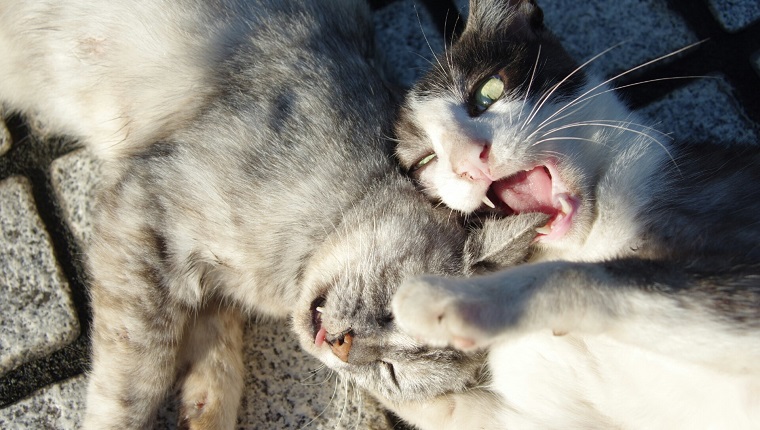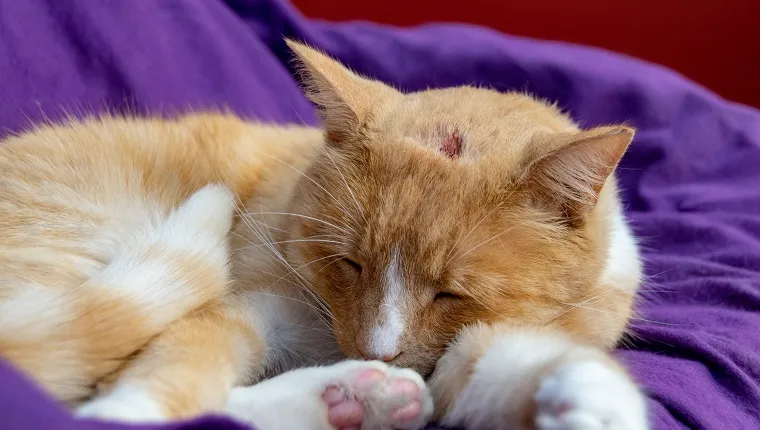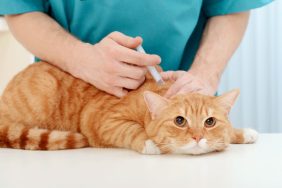Skin abscesses on cats are usually the result of infections or injuries, like those from a bite from another animal. They appear on the skin and resemble boils filled with pus.
Veterinarians do not advise that pet parents let skin abscesses on a cats go untreated because more serious complications can develop from them.
If you see the signs of a skin abscess on your cat, then you must get to a veterinarian for a proper diagnosis and treatment. Here’s what you should know about the symptoms, causes, and treatments for skin abscesses on cats.
Symptoms Of Skin Abscesses On Cats
When a cat is afflicted with a skin abscess, there are a number of symptoms that they might display.
Some of the most common symptoms of a cat with a skin abscess include:
- Pain around the skin abscess
- Swollen skin
- Hair loss near the abscess
- Pus around the skin abscess
- Scratching and itching a lot around the skin abscess
- Fever
In general, you might notice a cat becoming visibly more withdrawn and lethargic if they suffer from a skin abscess.
Causes Of Skin Abscesses On Cats

There are two main types of abscesses that might appear on a cat: Dental abscesses and skin abscesses.
When it comes to skin abscesses, the most likely way for a cat to suffer from one is after being in a physical altercation with another cat or animal. In general, male cats are more likely to suffer from skin abscesses due to their more boisterous and aggressive personalities.
Beyond fighting another cat or animal, a cat might also develop a skin abscess after experiencing other physical injuries.
Treatments For Skin Abscesses On Cats
If your veterinarian finds that your cat is suffering from a skin abscess, the first thing the vet will do is examine the area in question. They might also take a sample of any pus for further examination under a microscope.
It’s important to let your vet know when you first noticed the skin abscess on your cat, and let them know whether the cat has been outside or around other animals lately.
Treatment for a skin abscess usually involves cleaning, draining, and flushing the wound. The vet may prescribe a course of antibiotics or lance the boils, or in some cases, do a combination of both.
If the vet lances any boils, they may need to sedate the cat and put a drain in place to prevent the wound from closing and sealing in an infection.
If your vet prescribes antibiotics to treat the skin abscess, it’s vital that you finish the entire regimen and stick to their advised dosage. Keep up with follow-up vet visits. Your vet will need to remove any drain that they installed previously.
Do not allow your cat to scratch at the site as they recover. You may need to put an Elizabethan collar on them to prevent licking and scratching. As an alternative, you may wish to try a more comfortable cloud collar.
Have you ever had to deal with a skin abscess on your cat? What treatment did your vet advise? Let us know in the comments section below!









